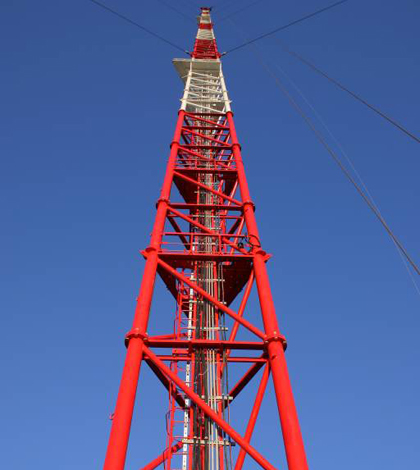1,000-foot Amazon Tall Tower Observatory to monitor climate change

The Zotino Tall Tower Observation Facility is a model for the Amazon tower.
An observation tower to be built in the Amazon Rainforest will monitor its effects on climate change, according to the BBC. The gargantuan tower will hold instruments collecting data on greenhouse gases, aerosols and weather conditions.
The Amazon Tall Tower Observatory is a joint project between Brazil’s National Institute of Amazonian Research, the University of the state of Amazonas and Germany’s Max Planck Institute. The three institutions will erect the tower, planned to be over 1,000-feet tall, to monitor fluctuations of gases over the forest and ultimately determine whether it is a net carbon sink or source.
Data from the tower will be combined with those collected by smaller structures already in the region. That will help improve data accuracy and allow scientists to compare findings from lower-altitude sites to ones yielded by high-altitude measurements.
It’s important to monitor carbon flux, aerosols, trace gas concentrations and radiation balance in the Amazon Rainforest because “it’s a very sensitive ecosystem and it will certainly change a lot in the next decades due to climate change,” said Paulo Artaxo, researcher at the University of Sao Paulo, to Popular Mechanics.
The tower is expected to cost more than $10 million U.S. dollars and should be completed by December 2014. It joins other large towers worldwide constructed to measure carbon fluctuation like the observatory at Mauna Loa volcano in Hawaii and another built by the Max Planck Institute in Siberia.
The tower’s height will be a real advantage to scientists. “You need the third dimension, altitude,” said John Barnes, station chief at Mauna Loa Observatory, to Popular Mechanics. “The Amazon is really an interesting place because it’s so large. With all the vegetation, it’s very dynamic for carbon dioxide.”
And building the structure to stand for decades will give researchers another view. “Ultimately, we need to have a long-term observatory,” said Martin Heimann, director of the Max Planck Institute for Biogeochemistry, to Popular Mechanics. “We realized also that, of course, the same information is missing from the tropics, and that’s why the ATTO project was set up.”
The project is funded by Germany’s Federal Ministry of Education and Research through 2015.
Image: The Zotino Tall Tower Observation Facility is a model for the Amazon tower. (Credit: Public domain, via wikimedia Commons)





0 comments